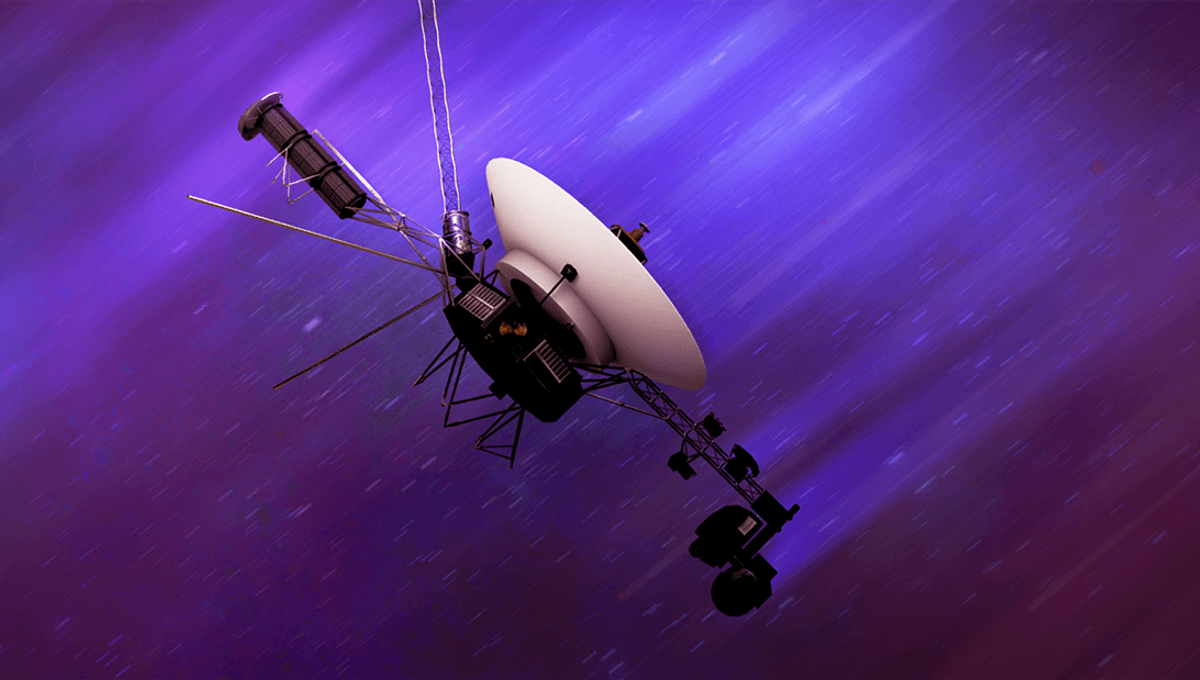Voyager Will Reach A Hypothetical Region In 300 Years – And Will Take 30,000 Years To Go Through It

Voyager Will Reach A Hypothetical Region In 300 Years – And Will Take 30,000 Years To Go Through It
In 300 years, NASA's Voyager spacecraft will reach a hypothetical region of space, long thought to exist but for which we do not yet have conclusive evidence. The region is so large that it will then spend the next 30,000 years passing through it.
Voyager was launched in 1977 and has been traveling ever since. At the moment, it is around 167 AU from the Earth, having become the first spacecraft to go beyond the heliosphere, cross the heliopause, and enter interstellar space. At its current position, it takes 23 hours, 12 minutes, and 18 seconds for signals from Earth to reach the spacecraft. At its current speed of about 61,195 kilometers per hour (38,025 miles per hour), it will still take over a year to widen that light-distance to a full 24 hours. At that point, Voyager will become the first human-made object to reach a full light-day from Earth. While Voyager's mission is nearly over, with fuel dwindling and the spacecraft expected to power down permanently in the 2030s, its journey is only just beginning. In 40,000 years, it will be closer to the star AC +79 3888 than our own Sun. But before that, it will have to pass through the Oort cloud, the hypothetical spherical shell of objects thought to surround our Solar System, right at the edge of the Sun's influence. "The distant Oort cloud marks the gravitational edge of the Solar System, in a vast region of undiscovered objects," NASA explains of the cloud, first hypothesized by Dutch astronomer Jan Oort in 1950. "Short-period comets may originate in the scattered disk, inner, part of the Oort cloud, while long-period comets likely come from the spherical, outer portion of the Oort cloud. These comets only pass the Sun on rare occasion, possibly when disturbed by distant passing stars or galactic tides. There is speculation of other large planets in this region that may disturb comets in their vicinity, but none have yet been discovered." The inner edge of the Oort cloud is thought to begin around 2,000-5,000 astronomical units (AU) from the Sun, with one AU being the distance between the Earth and the Sun, and ending somewhere between 10,000 and 100,000 AU from the Sun, though estimates on where this hypothetical region begins and ends vary. At the lower range of estimates, the Oort cloud could begin around 1,000 AU from the Sun. If the Oort cloud does begin here, the spacecraft could reach it in just a few centuries. However, given the sheer scale of the cloud, it will be there for tens of thousands of years. "Much of interstellar space is actually inside our Solar System," NASA explains. "It will take about 300 years for Voyager 1 to reach the inner edge of the Oort Cloud and possibly about 30,000 years to fly beyond it." Assuming that the Voyager probes make it through the cloud undamaged (a likely outcome, given that space is not the asteroid-dodging exercise sci-fi would have us believe), they could go on relatively unscathed for many, many years beyond that. Given that the probes contain the Golden Records, a message to any aliens who happen to stumble across them, astronomers have attempted to figure out how long they could continue their journey through the cosmos. "We evaluate the eventual degradation of the records from interaction with interstellar matter. We find that after traveling for 5 Gyr [billion years] in a smooth axisymmetric galactic potential, Voyager 1 is ~99% likely to suffer damage rendering the exterior-facing side of the record indecipherable, while Voyager 2 is only ~20% likely to suffer similar damage," a 2020 paper looking into Voyager's end explains. "We find that the spacecraft-facing side of both records will likely survive until the merger of the Milky Way and M31 in ~5 Gyr, after which it becomes possible that the spacecraft are ejected into the intergalactic medium and erosion rates reduce accordingly." In that context, Voyager's 50th anniversary in 2027 will look like peanuts.


